Seahorse
Hippocampus (Family Syngnathidae)

Seahorses are upright, slow-swimming syngnathiform fishes whose heads resemble a horse’s profile. They anchor with a prehensile tail, inhale prey with a snap of their long tubular snout, and wear interlocking bony plates instead of scales. Uniquely among fishes, males become pregnant: the female deposits eggs into the male’s brood pouch, where embryos develop until live birth.
🔬Classification
📏Physical Features
🌊Habitat Info
⚠️Safety & Conservation
Identification Guide

Field marks:
- Upright posture with a bent neck and horse-like head; prehensile tail curls around holdfasts.
- Body covered in bony rings/plates, often with cirri (skin filaments) and a species-specific coronet on the head.
- Dorsal fin beats rapidly for propulsion; tiny pectorals flutter for steering.
- Snout long and tubular; mouth lacks teeth and jaw protrusion—feeding is pure suction.
Differences from Similar Species
- Pipefish: elongate and horizontal, lack a prehensile tail and horse-like head.
- Ghost pipefish: have large pelvic fins and females brood externally in a fin pouch; seahorses have a male brood pouch on the trunk.
- Pegasus/sea moth: flattened, crawl on pectorals, and lack true prehensile tails.
Juvenile vs. Adult
Newborns are miniature seahorses without a fully functional grip and show paler colors; adults develop stronger coronets, more pronounced cirri, and tighter tail grip.
Top 10 Fun Facts about Seahorse
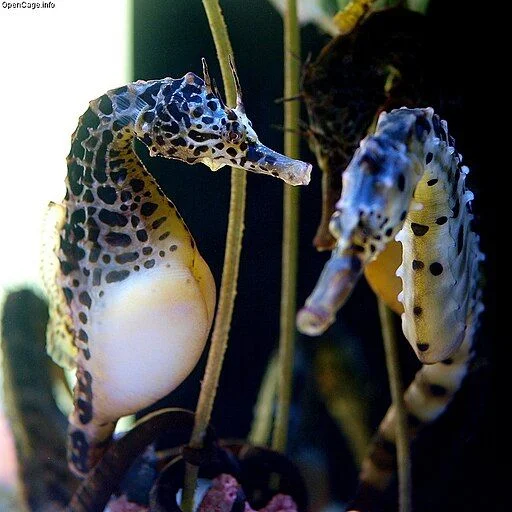
1. Dads Do the Pregnancy
Male seahorses carry eggs in a vascularized brood pouch, regulating salinity and oxygen like a placenta.
2. No Stomach, No Problem
With fast digestion and no true stomach, they must feed often on tiny crustaceans.
3. Whisper Jets
The dorsal fin beats up to 30–70 times per second, yet they remain poor long-distance swimmers.
4. Tail Like a Four-Sided Spring
The prehensile tail’s square cross-section grips better than round tails and resists crushing.
5. Signature Crowns
Each species bears a unique coronet—a head “crown” useful for identification (and personality in photos).
6. Eyes That Disagree
Eyes can move independently, scanning for prey while watching for danger.
7. Choreographed Romance
Pairs perform daily greetings and courtship “dances,” swaying and color-shifting in sync.
8. Masters of Makeover
Many species change color and grow cirri to match algae, sponges, or hydroids.
9. Tiny Territories
Home ranges can be just a few square meters; site fidelity helps photographers find them again.
10. Conservation Icons
Seahorses rally support for seagrass/mangrove protection—save the habitat, save the horse.
Diving & Observation Notes
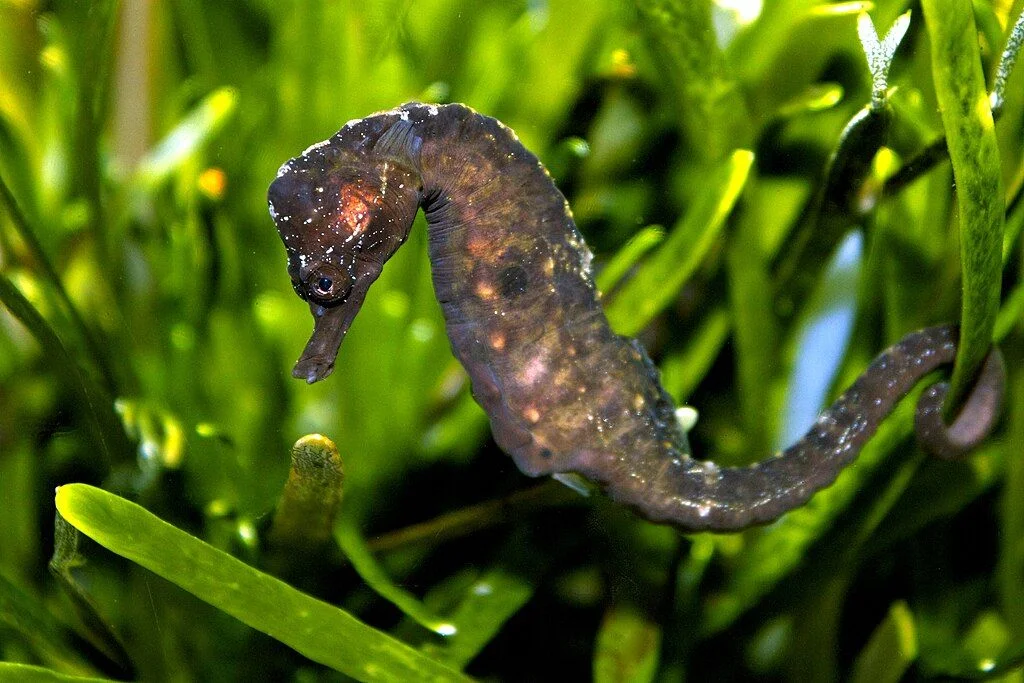
🧭 Finding Seahorses
Move slow and low along seagrass edges, mangrove roots, rubble with gorgonians/hydroids, and jetty pilings. Scan for tails gripping blades or branches, tiny shadow shifts, or the silhouette of a coronet.
📸 Photography That Tells a Story
- Focus the eye, then include the holdfast (grass blade, sea fan) to show lifestyle.
- Use gentle side/backlighting to reveal bony rings and cirri; keep background clean for subject pop.
- For pygmies on sea fans, try close-focus wide-angle to place the habitat in frame without crowding.
🧮 Settings & Approach
- Moderate shutter to freeze dorsal fin flicker; continuous AF for subtle sway.
- Avoid fin wash—these are featherweight fishes. Approach from below and aside, not from above.
⚠️ Ethics & Safety
- Never move or perch a seahorse for photos; do not use sticks to reposition hosts.
- During male pregnancy, limit flashes and time spent; stress can disrupt brooding.
- Maintain perfect neutral buoyancy over seagrass and gorgonians—fragile habitats recover slowly.
🌏 Local Guide Nuggets
- Dauin (Philippines): Muck slopes with thorny seahorses and excellent night finds.
- Anilao (Philippines): Jetty pilings and hydroid bushes—good for spiny/tiger species.
- Lembeh (Indonesia): Black sand and debris fields; look for tails on twigs and rope.
- Bali & Raja Ampat (Indonesia): Pygmy seahorses on Muricella and Annella sea fans at 15–30 m; patient eyes win.
Best Places to Dive with Seahorse
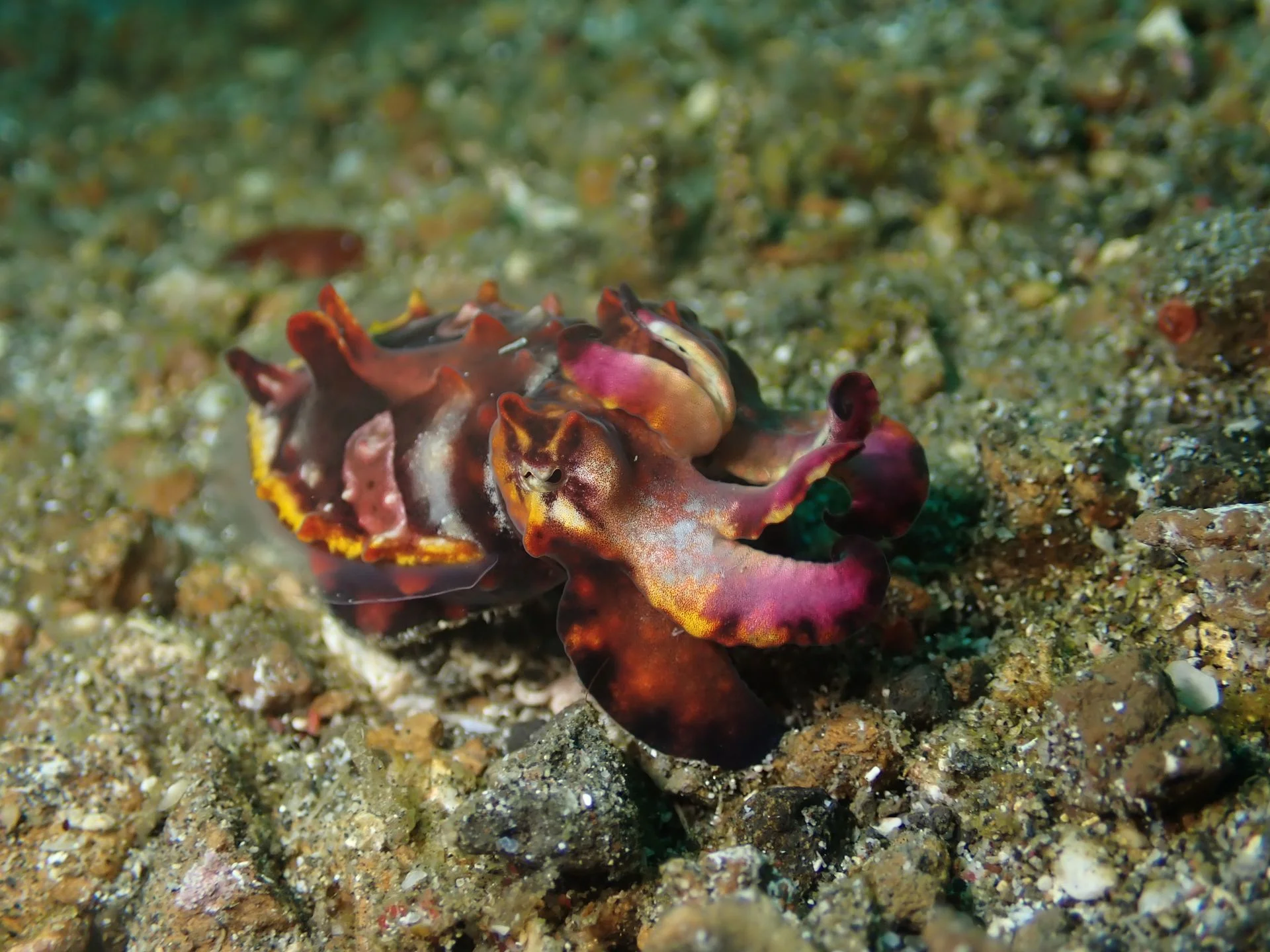
Lembeh
The Lembeh Strait in North Sulawesi has become famous as the muck‑diving capital of the world. At first glance its gently sloping seabed of black volcanic sand, rubble and discarded debris looks bleak. Look closer and it is teeming with weird and wonderful life: hairy and painted frogfish, flamboyant cuttlefish, mimic and blue‑ringed octopuses, ornate ghost pipefish, tiny seahorses, shrimp, crabs and a rainbow of nudibranchs. Most dives are shallow and calm with little current, making it an ideal playground for macro photographers. There are a few colourful reefs for a change of scenery, but Lembeh is all about searching the sand for critter treasures.
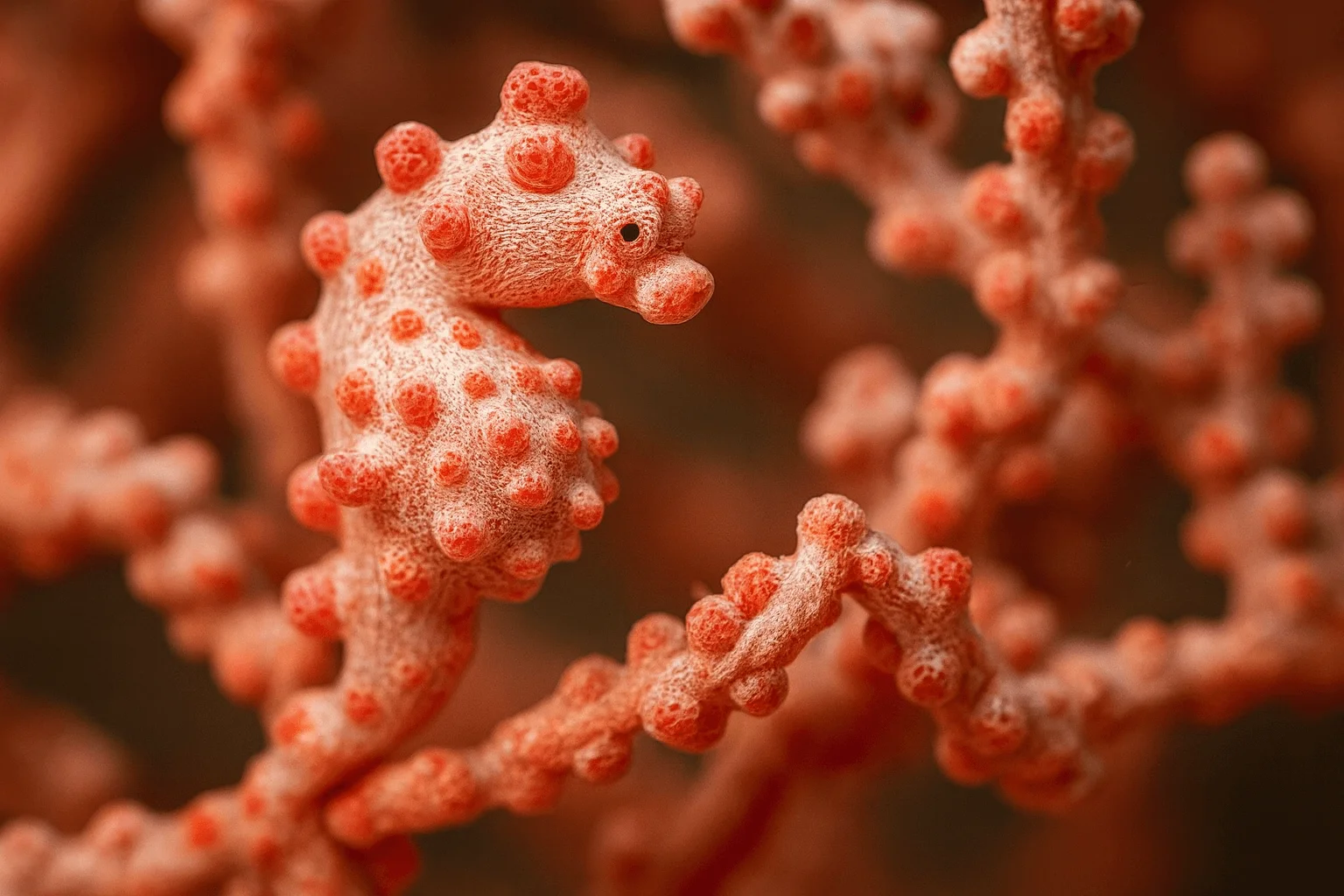
Anilao
Anilao, a small barangay in Batangas province just two hours south of Manila, is often called the macro capital of the Philippines. More than 50 dive sites fringe the coast and nearby islands, offering an intoxicating mix of coral‑covered pinnacles, muck slopes and blackwater encounters. Critter enthusiasts come for the legendary muck dives at Secret Bay and Anilao Pier, where mimic octopuses, blue‑ringed octopuses, wonderpus, seahorses, ghost pipefish, frogfish and dozens of nudibranch species lurk in the silt. Shallow reefs like Twin Rocks and Cathedral are covered in soft corals and teem with reef fish, while deeper sites such as Ligpo Island feature gorgonian‑covered walls and occasional drift. Because Anilao is so close to Manila and open year‑round, it’s the easiest place in the Philippines to squeeze in a quick diving getaway.
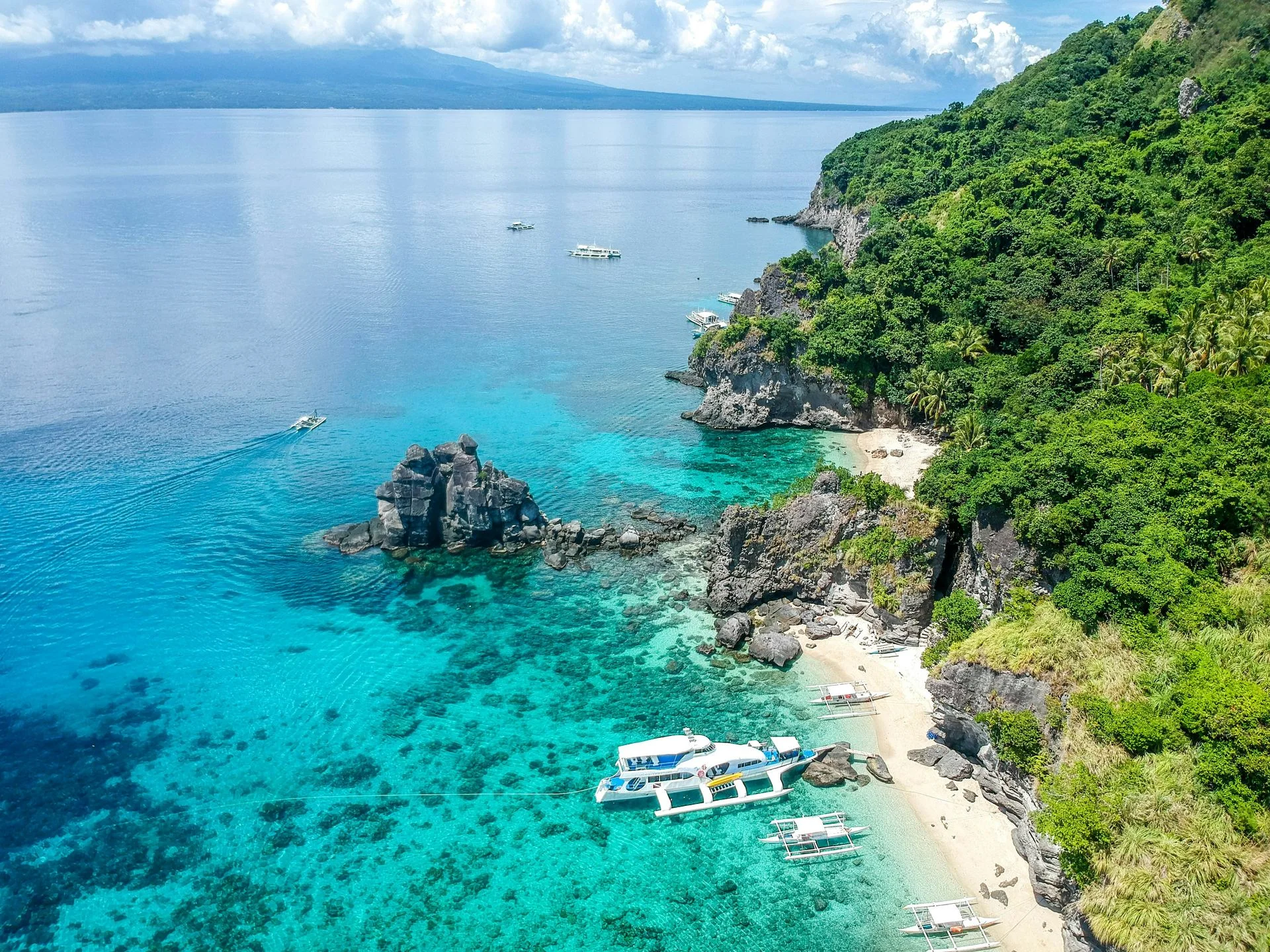
Dumaguete
Dumaguete on the southeast coast of Negros is the jumping‑off point for some of the Philippines’ most diverse diving. Along the nearby town of Dauin, a series of shallow marine sanctuaries and black‑sand slopes hide critters galore: frogfish, flamboyant cuttlefish, mimic octopus, ghost pipefish, seahorses, pipefish and nudibranchs. Artificial reefs made from car tyres and pyramids provide extra habitat. Offshore, Apo Island’s walls and plateaus burst with hard and soft corals, schooling jacks and barracudas, and friendly green turtles. With day trips to Oslob’s whale sharks or Bais’ dolphin‑watching, and excursions to nearby Siquijor, Dumaguete offers a perfect mix of macro muck diving and classic coral reefs.
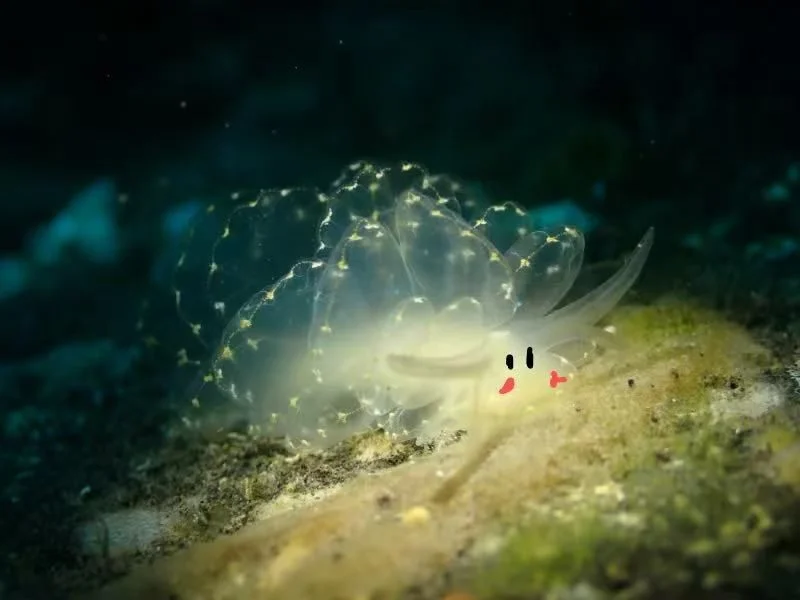
Tulamben(Bali)
Tulamben sits on Bali’s northeast coast and is best known for the USAT Liberty shipwreck – a 125‑metre cargo ship torpedoed in WWII that now lies just a short swim from shore. Warm water, mild currents and straightforward shore entries make diving here relaxed for all levels. Besides the wreck, divers can explore coral gardens, black‑sand muck sites and dramatic drop‑offs. Macro lovers will find nudibranchs, ghost pipefish, mimic octopus and pygmy seahorses, while big‑fish fans can encounter schooling jackfish, bumphead parrotfish and reef sharks. With a compact coastline packed with variety, Tulamben delivers world‑class wreck and critter diving without long boat rides.

Raja Ampat
Raja Ampat, the “Four Kings,” is an archipelago of more than 1,500 islands at the edge of Indonesian West Papua. Its reefs sit in the heart of the Coral Triangle, where Pacific currents funnel nutrients into shallow seas and feed the world’s richest marine biodiversity. Diving here means gliding over colourful walls and coral gardens buzzing with more than 550 species of hard and soft corals and an estimated 1,500 fish species. You’ll meet blacktip and whitetip reef sharks on almost every dive, witness giant trevally and dogtooth tuna hunting schools of fusiliers, and encounter wobbegong “carpet” sharks, turtles, manta rays and dolphins. From cape pinnacles swarming with life to calm bays rich in macro critters, Raja Ampat offers endless variety. Above water, karst limestone islands and emerald lagoons provide spectacular scenery between dives.